|
By Jason Wright, Preserve WV AmeriCorps For my Great Story, I would like to talk about my “Seniors Meet Seniors” oral history recording project. The seeds of this project were planted during a discussion my partner and I were having over dinner one night late in December, 2016. I was bemoaning the average age of the people that were volunteering at the West Augusta Historical Society in Mannington, WV, where I serve; they are all so old, and yet they all had such interesting stories to tell about how life in the area used to be back in the “Good Old Days.” The problem was there were few people there to listen to those stories. I realized that there needs to be an active involvement by the youngsters of the area in the society, so that they can learn about those days. If they can get involved, then there might be a future for the society. But how to get them involved? My girlfriend told me that nowadays, high school students need to get experiential learning credits in order to graduate. They get these credits by performing community service.
And so, with the new year, I began the process of trying to contact the people that had the power to okay this project. I was aiming for late April recording dates and I thought that allowing sixteen weeks to get everything prepared would have been enough time. Everyone I spoke to loved the idea, including the society’s Board of Directors; Diana Hayes, who is the Activities Coordinator for Marion County Senior Citizens; North Marion High School counselor Alex Eddy (who told me, “I think this sounds like an awesome project. I will pass this along with some of our history teachers”); and Bill Stalnaker, the North Marion teacher that was to be in charge of recruiting students. Unfortunately, due to the busy schedules of both Mr. Cox and Mr. Stalnaker, it was not until March 8 that I was able to personally meet with Mr. Stalnaker and describe what I wanted to do in some detail. He loved the ideas that I had, and, as a graduate of Fairmont State College’s Folklore Studies program, set up a meeting with Pat Musick, the Director of the Frank & Jane Gabor WV Folklife Center at Fairmont State. Their enthusiasm for my project let me know that this was something that could create of lot of good in the community. They even suggested that the recording event become an annual thing. Because Mr. Stalnaker teaches the Newspaper class at North Marion, and because of his background in folklore and music, he would be able to provide the recording devices. All recordings and transcripts would be archived at the society’s Wilson School Museum, as well as at North Marion and Fairmont State. All that was left to do was recruit the students and the senior citizens.
And that was where I ran into difficulties. While Mr. Stalnaker was to recruit students, I was to find senior citizens to be interviewed. I spoke at all three Marion County Senior Citizen centers. I gave an interview with the Fairmont Times West Virginian newspaper. I put up flyers advertising my search. I mentioned it to all and sundry that I met in Mannington and elsewhere. Everyone I spoke to was very nice, but not very helpful. In Fairview, there was a woman who brought me her self-published book on the history of Fairview, but she did not want to be interviewed. There was no response from anyone from the Fairmont Senior Center. But the newspaper article and the Mannington Senior Center netted me a few wonderful individuals. Those interviews lasted for an hour each. Every time the senior citizen would finish talking about something, they would remember some other little detail, either about that subject or about something that might have taken place across the street from where the original subject of conversation took place. These people knew so many details about life in Mannington. Where the stores where, who the proprietors were, their ethnicity. What the cars were like. What people ate. So many memories were unlocked. It was wonderful to listen to them speak. After each interview, the senior citizens would talk about how they wanted to be a part of the recording process again, because they knew that there were more stories they could tell. I feel that now that several respected members of the community have done this, the next time there is an oral history project, I will be able to get more response from the community. And there will be another recording event, because everyone I spoke to realizes the importance of collecting everyday people’s stories about things that the history books do not really ever speak about. By Edward Pride IV, Preserve WV AmeriCorps After more than a year of renovation and planning, a celebrated Clarksburg landmark is once again open to the public. Waldomore, an antebellum-era mansion situated on the grounds of the Clarksburg-Harrison Public Library, has served the residents of Clarksburg as a library, museum, archives, and civic meeting and performance space for more than 80 years. To commemorate the reopening of the building, a grand reopening reception and open house was held to provide guests a much-anticipated tour of the site. Originally constructed in 1842 by Clarksburg businessman and Virginia State Senator Waldo P. Goff, the two-story brick mansion served as the residence of the Goff family for nearly a century. In 1930, Waldo’s daughter, May Goff Lowndes, donated the structure to the City of Clarksburg to be used as a library and museum. From 1930 to 1975, Waldomore operated as home of the Clarksburg Public Library. After the completion of a new library building in 1975, Waldomore was repurposed as a center for historic and genealogical research as well as a public meeting and event space. In October 2015, the City of Clarksburg was awarded a grant from the West Virginia Division of Culture and History and the National Endowment for the Arts for the purpose of restoring Waldomore. The project, totaling more than $500,000, included the replacing of electrical systems, installation of new period light fixtures and chandeliers, lead and asbestos abatement, plaster repair, new carpeting and paint, and restoration of exterior doors. Between April and December of 2016, contractors from Allegheny Restoration were hard at work returning the building to its former glory. Upon completion of the renovation, Waldomore and library staff began the process of returning collections and furnishings back to the site. During the restoration, Waldomore staff embarked on the arduous task of creating new policies and operating procedures, the laying out of new floor plans, and the processing and cataloging of artifacts and materials for their eventual return. The once in a lifetime opportunity allowed for staff to institute much needed changes to better serve patrons as well as allow for the continued preservation of collections for future generations. Prior to the grand reopening, a private reception was held for those who assisted and contributed to the project as a thank you for their tireless effort and support. Guests in attendance included the Mayor and City Council of Clarksburg, the Commissioner of the West Virginia Division of Culture and History, the Director of the West Virginia State Historic Preservation Office, and various contractors and engineers who worked on the project. During the reception, several speakers addressed the attendees and spoke of the importance of Waldomore to Clarksburg and historic preservation in the Mountain State.
On June 11th, Waldomore reopened its doors once again for its grand reopening reception. During the festivities, city representatives and the public were able to tour the newly restored structure as well as partake in light entertainment and refreshments. Waldomore and library staff were on hand to assist patrons as well as provide information on the building and project. Comments ranged from memories of Waldomore when it was once a library to compliments on the quality of the renovation. In total, more than 150 guests participated in the reception. Thanks to the West Virginia Division of Culture and History, City of Clarksburg, the Clarksburg-Harrison Public Library, and countless individuals, the success of this renovation will allow for Waldomore to continue providing quality service and research for decades to come.
I am from Latrobe, Pennsylvania, and share a hometown with children’s television educator Fred Rogers, professional golfer Arnold Palmer, and even the first banana split. History, therefore, was an ever-present and meaningful part of growing up. I soon realized there were so many stories from the past left unwritten. When I attended Saint Vincent College for history, I wrote my senior thesis on Powdermill Nature Reserve’s bird banding lab, the longest continually-running station of its kind in the United States. Having visited and worked at Powdermill for many years, I was excited to document its history and craft an interesting narrative. I also developed an exhibit on Rachel Carson at the McCarl Coverlet Gallery on campus. Thanks to these projects and my academic mentors at Saint Vincent, I discovered the worlds of public history and environmental history. At West Virginia University, I worked with professors and fellow graduate students on public history projects such as the West Virginia glass industry and Jack Roberts Park. A project on Morgantown’s Sunnyside neighborhood soon developed into my MA thesis, which looked at changes in the neighborhood’s culture, housing, and approach to development. In the summer of 2016, I had the wonderful opportunity to intern at the Smithsonian’s National Air and Space Museum on the National Mall in Washington, D.C., where I worked on education programs, exhibit development, and book projects. Furthermore, I spent a few weeks of this summer traveling Europe with my sister and witnessing an incredible array of historic sites, cultures, and stories. Whether I was spending time in the mountains of Pennsylvania and West Virginia, working on “America’s Front Yard” in the country’s most-visited museum, or traveling the world, I have learned a lot about the power of place. My studies over the past few years have solidified a passion for cultural landscapes and understanding sense of place and identity. Clio turns the physical, ever-changing landscapes of our world into a virtual museum, where we can document and discover the past around us. There are currently around 30,000 Clio entries on historical sites, museums, monuments, landmarks, and other sites of cultural or historical significance. One of my favorite features of Clio is the Time Capsule category, which encourages users to create entries for sites that no longer exist. Each Clio entry includes a concise, scholarly narrative and informative resources such as photographs, maps, primary sources, books, articles, videos, and credible websites. These entries are created by individuals, organizations, teachers, and students, building not only a collection of entries but a community of engaged users. I first learned about Clio and the Preserve WV AmeriCorps program through my colleagues at WVU. I heard nothing but accolades, which motivated me to pursue AmeriCorps after graduation. I am thrilled to serve with a nonprofit that is promoting historical scholarship and community engagement on a creative digital platform. I also appreciate the philosophy of its founder, Dr. David Trowbridge of Marshall University, that success is not measured by clicks or downloads but by interaction with historical and cultural resources. This commitment to education and public accessibility gives so much meaning to my everyday work.
A northern California native, Kyle Warmack has had a passion for history all his life. This love of history led him to work in the film industry, first in receiving his education at the UCLA School of Film, Theater and Television, then for ten years as gaffer (Chief Lighting Technician) on a wide range of screen projects. Kyle first fell in love with the history of West Virginia while working in the state on two feature films several years ago. When he was looking for an opportunity to give back through service in 2017, the positions offered by the Preservation Alliance proved to be an ideal chance to spend more time learning about the Mountain State's rich past while contributing to this unique and special place. While serving as a Preserve WV AmeriCorps member with the Clio Foundation, he has the excuse to talk about history with anyone and everyone in the state...and he's going to try to do just that!
|
Preserve WV StoriesCategories
All
Archives
August 2023
|
Get Involved |
Programs |
Contact UsPreservation Alliance of West Virginia
421 Davis Avenue, #4 | Elkins, WV 26241 Email: info@pawv.org Phone: 304-345-6005 |
Organizational Partners:
© COPYRIGHT 2022 - PRESERVATION ALLIANCE OF WEST VIRGINIA. ALL RIGHTS RESERVED.







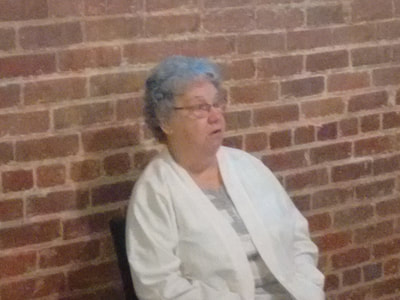

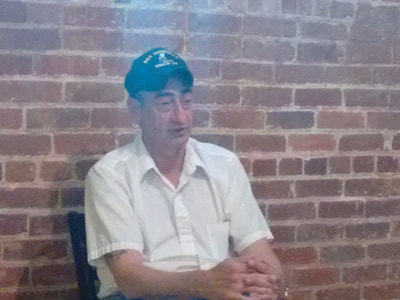


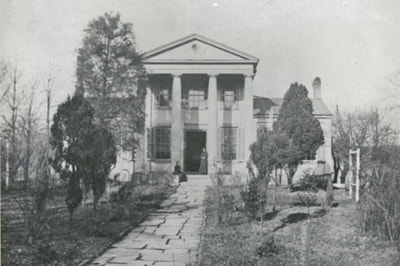
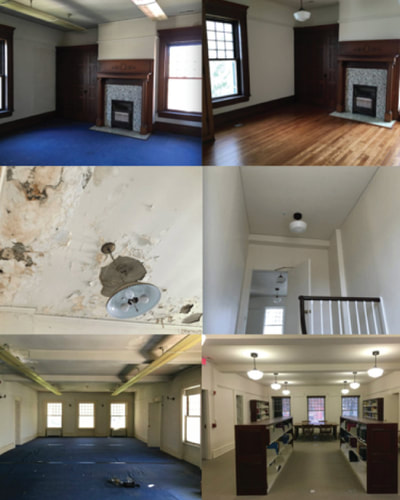


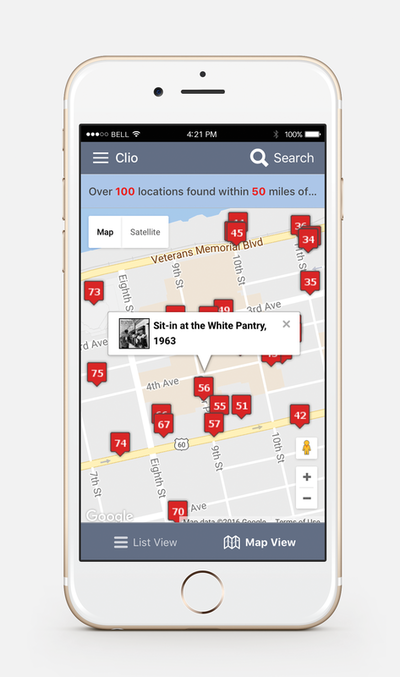


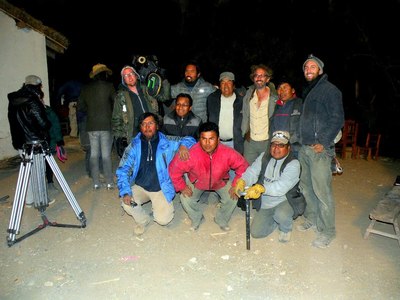

 RSS Feed
RSS Feed



